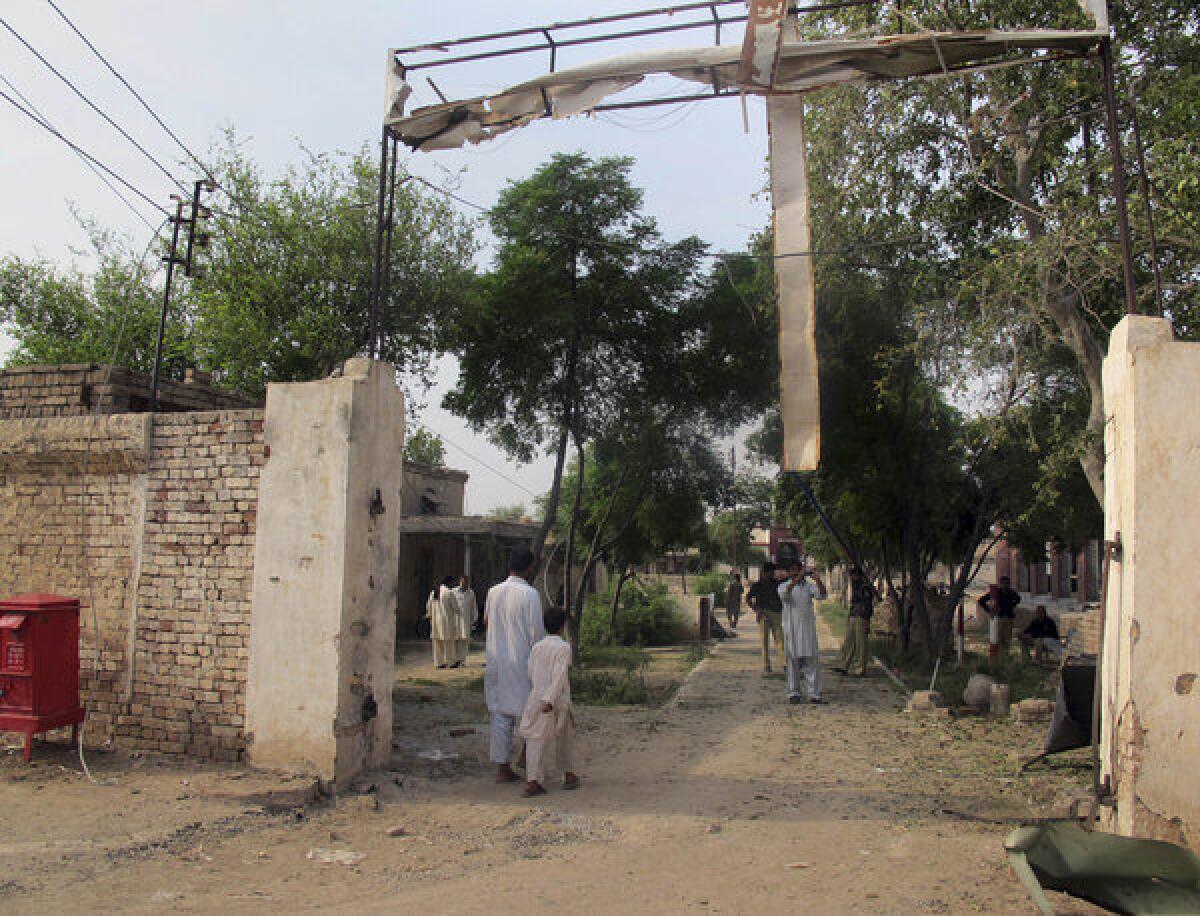Spree of jailbreaks stirs fear of new Al Qaeda threat

- Share via
In less than a week, more than 2,000 prisoners, many of them Islamic militants trained by Al Qaeda, have been broken out of detention in Iraq, Libya and Pakistan in spectacularly violent raids.
The spree of suicide bombings and rocket fire that has liberated a potential army of extremists has raised concern among some that the breakouts were synchronized by an ascendant faction of the terrorist network.
But counter-terrorism experts attribute the seemingly coordinated prison breaks more to the similarity of local security failures in the countries involved than to any rebirth of the command-and-control structure of Al Qaeda that was disrupted by the killing two years ago of Osama bin Laden.
“I’m not a big fan of conspiracy theories, but as a member of the commentariat I’m fully aware of the Rule of Three,” tweeted Daniel Drezner, a professor of international politics at Tufts University’s Fletcher School of Law and Diplomacy. He referred to the stance among analysts that three similar occurrences constitute an indicative “trend.”
Fears of a well-choreographed terrorist plot in the making have been bolstered by the example of a prison break in Yemen in 2006, which liberated the rank and file of what is now Al Qaeda in the Arabian Peninsula, or AQAP. Though other Al Qaeda affiliates have been weakened by the assassination of Bin Laden and other leaders, AQAP is considered by international security experts to pose the greatest danger of launching strikes against the United States and its allies.
AQAP trained and equipped Umar Farouk Abdulmutallab, the Nigerian convicted of trying to blow up a U.S. airliner as it approached Detroit on Christmas Day 2009 by detonating explosives sewn into his underwear.
Stephen Biddle, a professor of political science and international affairs at George Washington University, sees different motivations behind the prison breakouts that, while all potentially destabilizing, are unlikely to herald any comprehensive plot directed at Americans.
“None of this should be interpreted to mean that these organizations can’t attack us, but when you look at the scale of what these terrorist groups have been able to organize since 2001, it’s very small,” said Biddle, also a senior fellow with the Council on Foreign Relations.
“They’ve been trying -- it’s not that attacks have been zero -- and they might ultimately succeed, but I tend to think the danger of regional instability poses more of a threat to U.S. security than [the freed fighters’ plotting] a direct attack on the homeland.”
If the escaped militants join forces with those fighting in the Middle East’s myriad conflicts, oil production and shipment could be disrupted, with serious spillover effects worldwide, Biddle said.
Despite the horrors of the Sept. 11 attacks and the flashes of fear spread across the United States after failed terrorist plots like Abdulmutallab’s and the 2010 Times Square bombing attempt, Biddle noted that terrorist attacks “have not been a significant contributor to mortality in the United States.”
The breakouts of the last week were more likely motivated by Al Qaeda’s regional interests, such as ousting Syria’s Shiite-aligned president, Bashar Assad, and backing Islamists seeking to take power in the Middle East, racked by political upheaval spawned by the “Arab Spring” uprisings.
The Taliban fighters who on Monday attacked a teeming prison in Dera Ismail Khan, bordering the volatile northwestern Pakistani tribal region along the border with Afghanistan, are blamed for more than 50,000 deaths in battles with rival warlords and troops of the U.S.-led military force in Afghanistan. The Taliban attackers used suicide bombers, mortars and grenades to blow out the prison’s power supply and blast through the outer walls.
Al Jazeera called the attack “extremely calculated” and noted that the assailants used bullhorns to alert their imprisoned comrades to the opportunity to escape. Authorities put the number of escapees at 248, most of whom apparently managed to flee the area before a manhunt was launched.
Pakistani Taliban spokesman Shahidullah Shahid said his group took responsibility for the assault, The Times’ Alex Rodriguez reported from Islamabad.
On Saturday, about 1,200 prisoners escaped the Koyfiya compound in the violence-plagued Libyan city of Benghazi. The attack on the prison followed a riot among inmates and deadly clashes a day earlier between rogue militia units and members of the Muslim Brotherhood, which seeks Islamic rule over the chaotic country.
Libya has been convulsed by violence since the 2011 U.S.-backed uprising against longtime strongman Moammar Kadafi, including the militant attack on the U.S. diplomatic mission in Benghazi in September that killed Ambassador J. Christopher Stevens and three other Americans.
The most dramatic prison breakout occurred a week ago with simultaneous attacks on Iraq’s Abu Ghraib and Taji prisons, both near Baghdad. Responsibility for the operations, in which the Iraqi Interior Ministry said at least 50 guards and soldiers were killed, was claimed by the Al Qaeda-allied Islamic State of Iraq and the Levant in a statement after an estimated 500 to 600 prisoners fled. Dozens were known accomplices of Al Qaeda fighters, including so-called high-value detainees captured by U.S. forces and sentenced to death after trials on terrorism charges.
In both the Pakistani and Iraqi prison breaks, news agencies quoted authorities as saying they suspected the attackers had help from inside the prisons or that authorities ignored reports that operations were in the works.
ALSO:Monument to Soviet dictator Stalin to be restored in Georgia
Mystery blogger exposing threats to fair election in Zimbabwe
Spain train driver was on phone and speeding when crash occurred
A foreign correspondent for 25 years, Carol J. Williams traveled to and reported from more than 80 countries in Europe, Asia, the Middle East and Latin America.
More to Read
Sign up for Essential California
The most important California stories and recommendations in your inbox every morning.
You may occasionally receive promotional content from the Los Angeles Times.











